The Wonderful Story of Leaves - A Year on the Life of - Macro Photography (Photo Essay)
The Humble Leaf
We don't often stop to think about how important leaves are but without them we simply wouldn't exist. If fungus, mold and bacteria via worms didn't break them down when they're finished, we wouldn't be here either. The story of the leaf is an amazing conquest by nature to harness the energy of the sun and allow life to flourish on planet earth.
Photosynthesis
Stromatolites are though to be the first photosynthetic organisms on Earth up to 3.5 billion years ago. Since then other bacteria, algae and plants have harnessed the genetic marvel of chlorophyll along the evolutionary history of life to provide food for themselves from carbon dioxide and water, producing oxygen as a waste product. Chlorophyll created the basis of our whole ecosystem and the food chain on planet earth, which everything else in the sea and on land depends upon to survive. (except for a few strange extremophile bacteria which live in hot springs and deep in rocks.)
Macro Photography & Microscopes
When I looked at leaf slices under the microscope as a small boy for the first time, it allowed me to see their intricate veined structures and I began to realise that all life is so very similar, that we all come from the same source. I've been photographing leaves ever since and in particular have studied the Oak and Beech trees of Epping Forest throughout their deciduous cycle. I hope you enjoy this year in the life of leaves from the very first bud to their skeletal remains as much as I have enjoyed putting it together
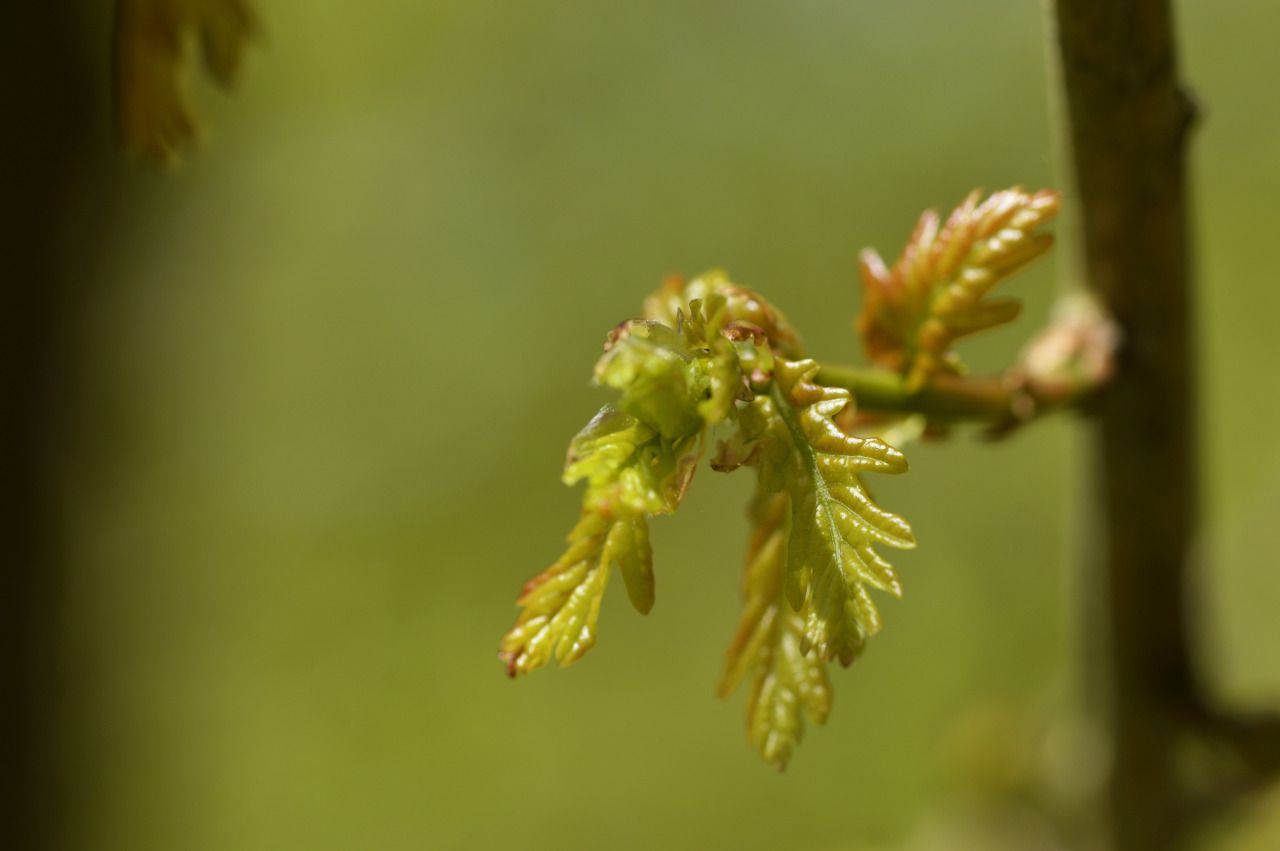
- The First Oak Buds in Spring at Epping Forest 1/60th @f8 ISO 100

- Beech Leaves Budding in Spring at Epping Forest 1/125th @ f5.6 ISO 400
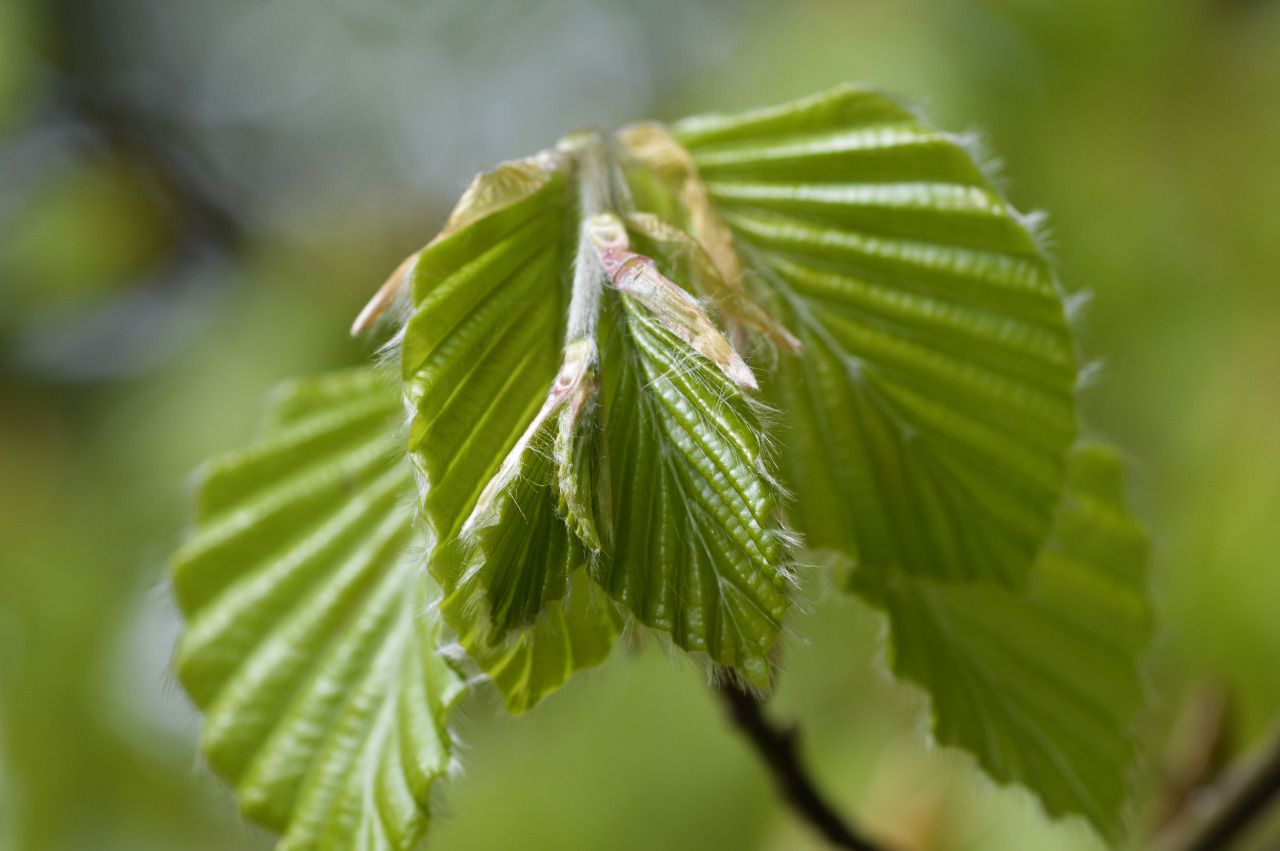
- Beech leaves folding out from their protective sheath to start photosynthesising the trees first spring sugar 1/125th @ f8 ISO 160
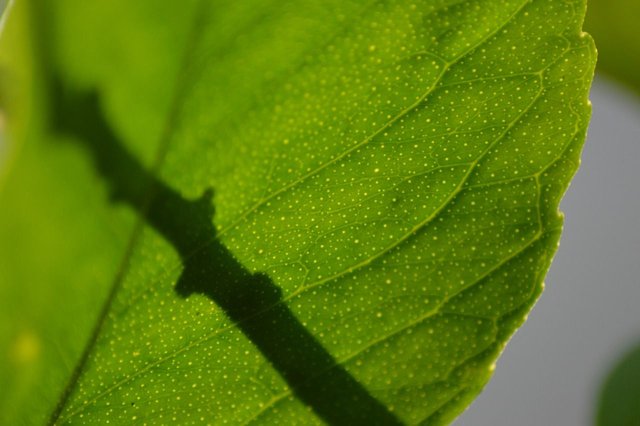
- A young Citrus leaf backlit in the morning sun 1/640th @ f5.6 ISO 400

- A new leaf edge with prominent veins 1/125th @ f n/a ISO 160 (manual lens)
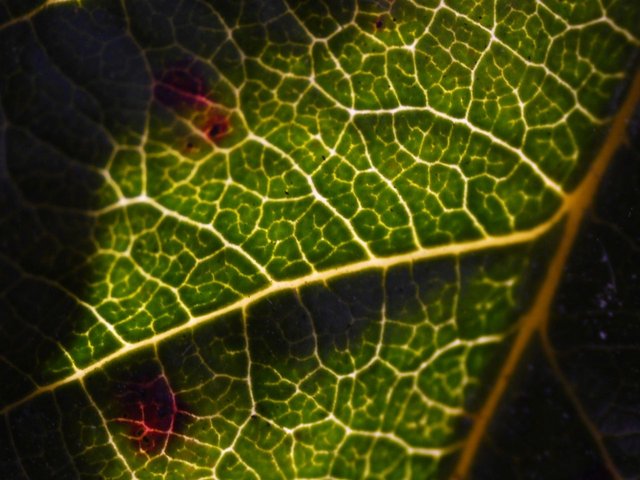
- A Medlar leaf shows off the delicate veined structure transporting sugars from the sun to the body of the plant and eventually into fruit 1/ 125th @ f n/a ISO 200 (manual lens)
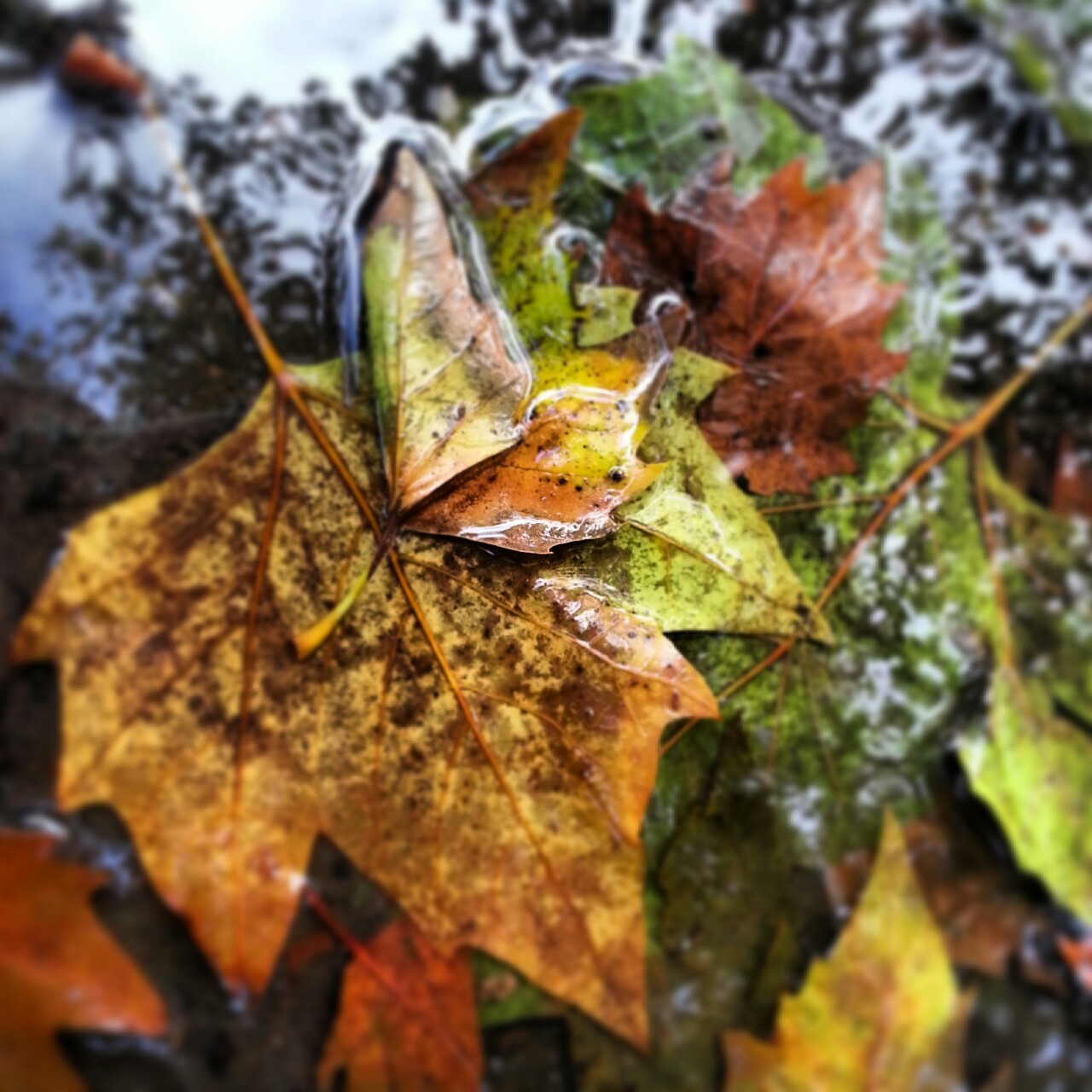
- London Plain leaves in water accelerate the decaying process producing rich mottled colours and the unmistakable aroma of autumn no EXIF data available (cropped shot)
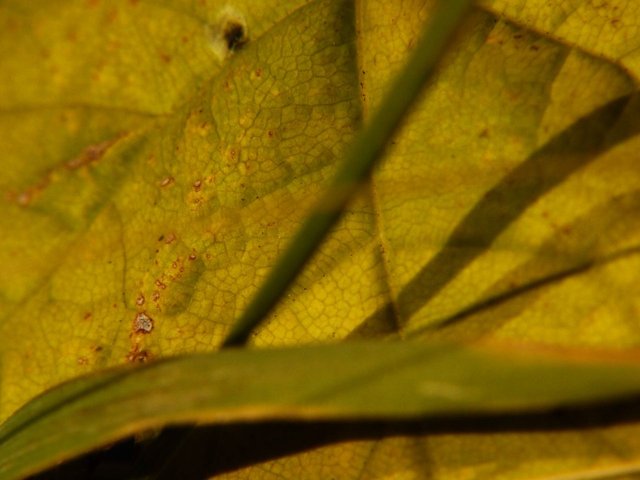
- A Sycamore Leaf begins to die in autumn falling among the grass 1/500th @ f10 ISO 100
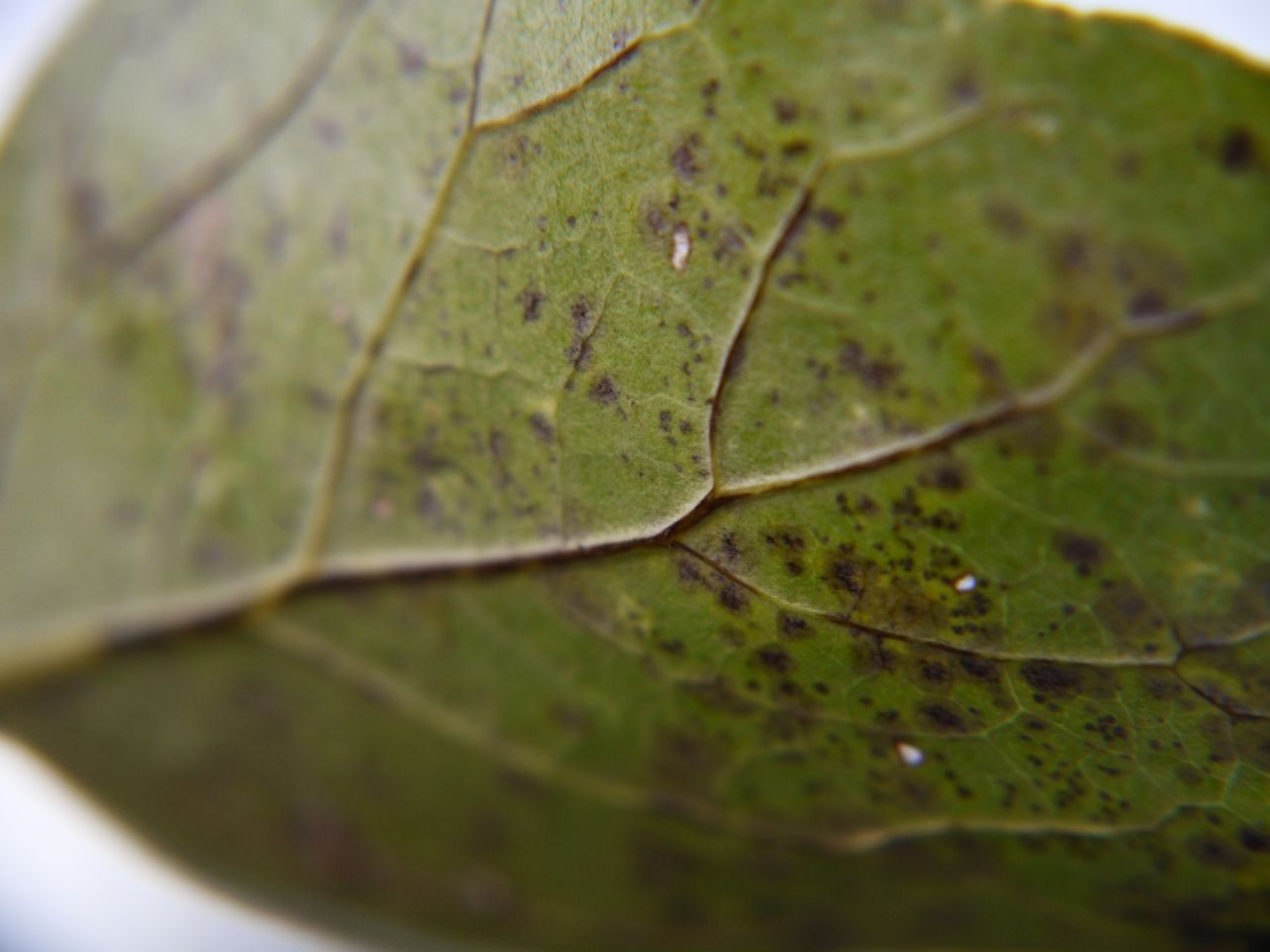
- A Dead leaf with prominent veins exposed as bacteria begin the process of decay 1/180th @ f5.6 ISO 250
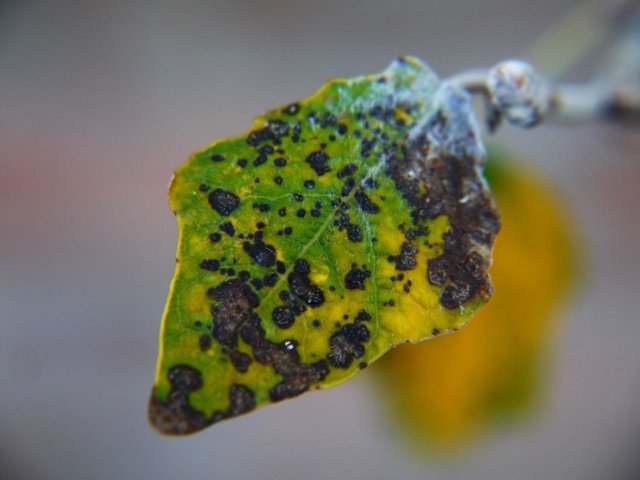
- Bacteria begin to blacken this leaf as the pigment breaks down and cells begin the recycling process 1/80th @ f5.3 ISO 320
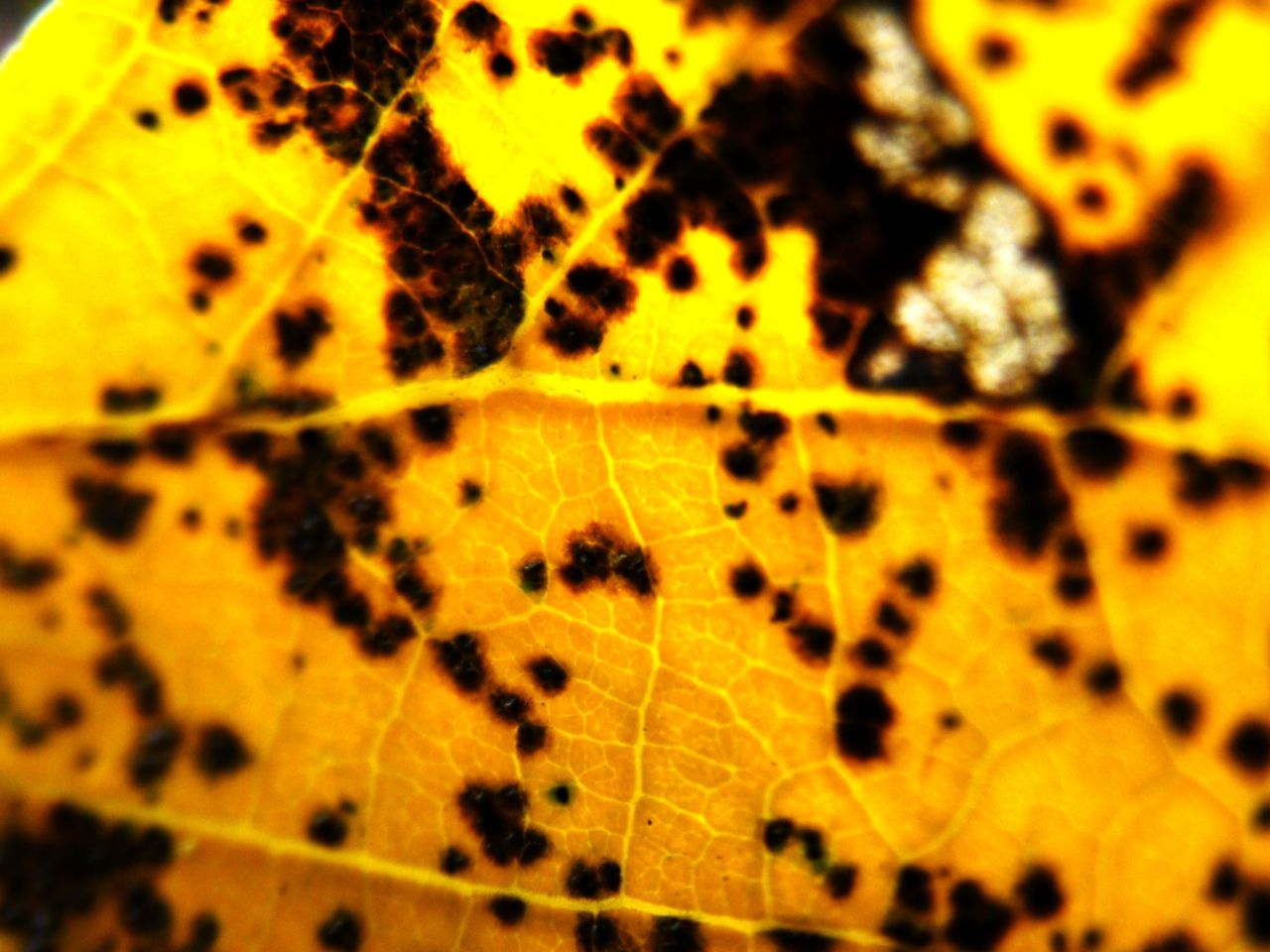
- As the leaf dies and is broken down chlorophyll is removed from the leaf body to reveal a yellow colour underneath 1/15th @ f n/a ISO 400 (manual lens)
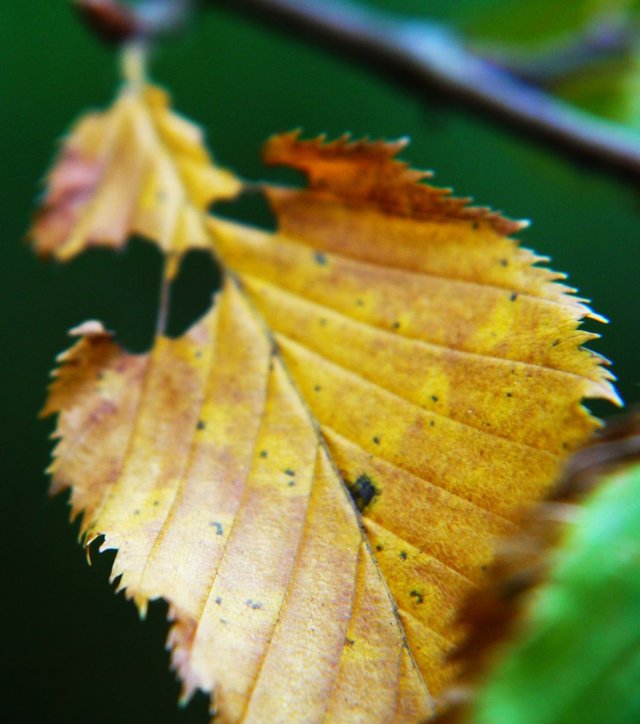
- This yellowing leaf has also succumbed to partial predation by a leaf eater before it is returned to the ground 1/60th @ f5.2 ISO 400
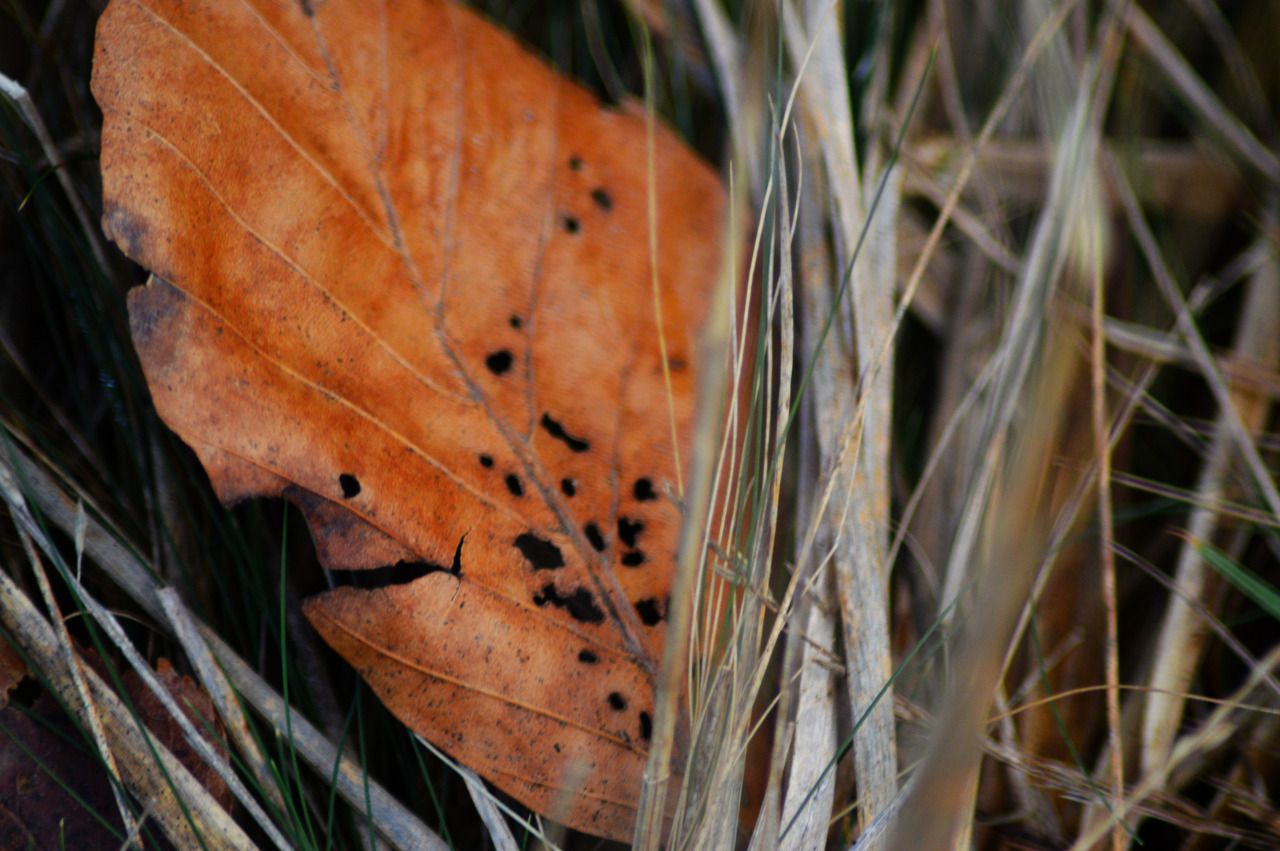
- Beech Leaf pitted with holes among dead grass, the blades of which are also leaves and succumb to the same fate 1/500th @ f6 ISO 720
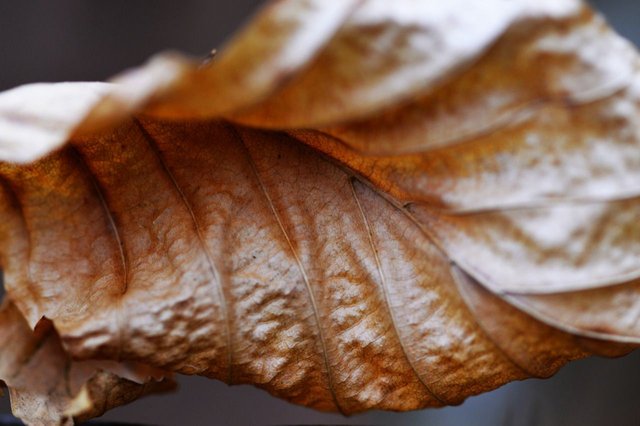
- Last Years Beech leaf still attached to the tree and it's cellulose structure preserved in a dry spot 1/125th @f5.6 ISO 400
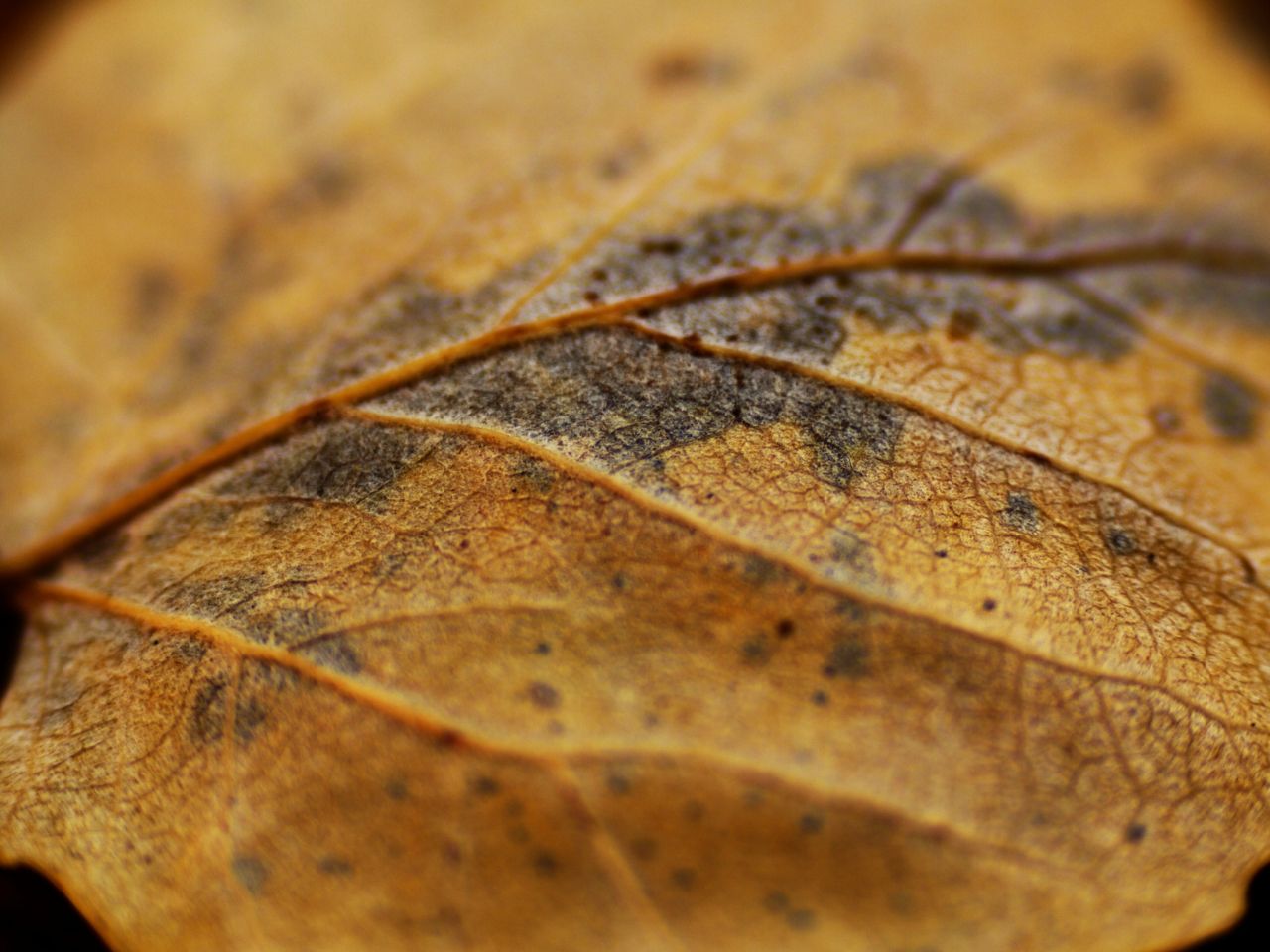
- This dead leaf has begun the process of decay as bacteria travel along the main arterial routes of the body 1/200th @ f n/a ISO 100 (manual lens)
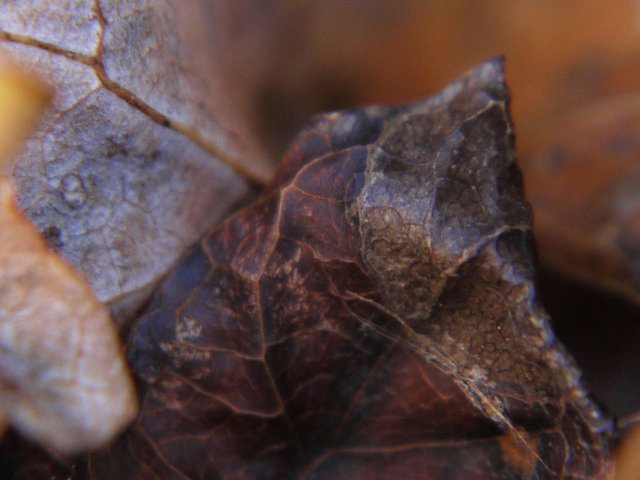
- As leaves begin to rot they darken and begin to turn to mush as their structure breaks down 1/80th @ f 5.6 ISO 320
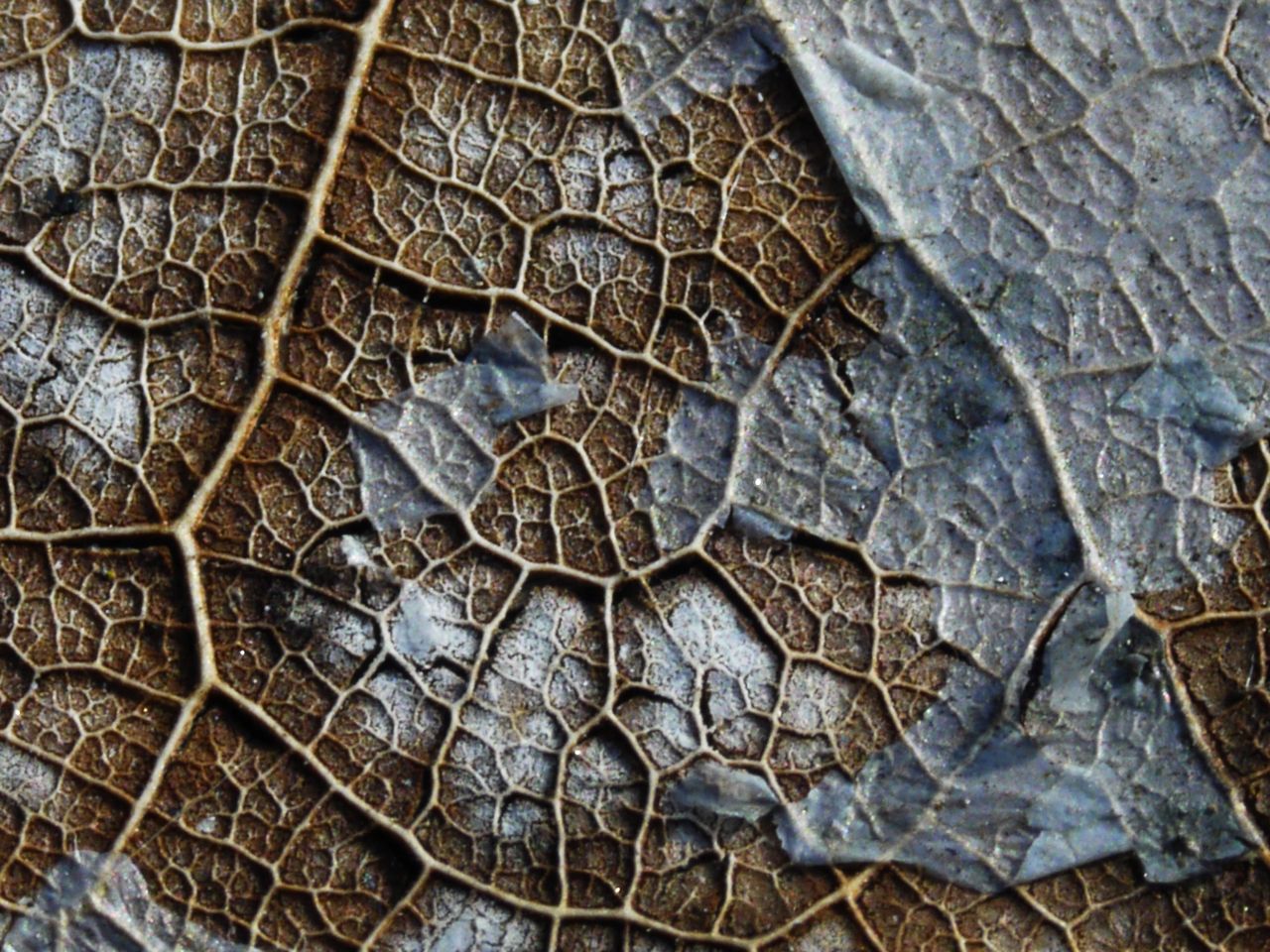
- A decayed leaf in dry conditions reveals it's fine structure and a delicate membrane remains in places like skin 1/40th @ f n/a ISO 200 (manual lens)
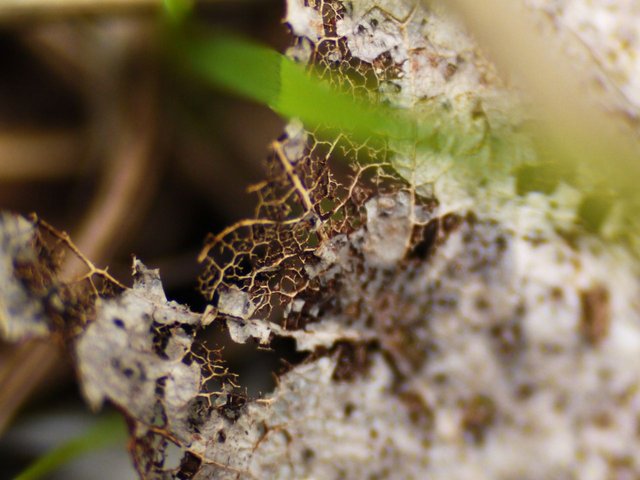
- The last part of this leaf to disassemble in the middle of a dry winter is the tough skeletal layer revealing a honeycomb like skeleton underneath the layers of cells previously involved in creating sugar 1/50th @ f n/a ISO 400 (manual lens)
Technical
These photos are all macro photos taken in the field (or the garden). Leaves on trees can be hard to shoot because they move in the breeze and a tripod in this situation is probably more trouble than it's worth carrying so s steady hand is required and good boots for boggy ground. I used a Nikon 105mm macro lens for many of these photos, which creates a razor thin depth of field. This gives the impression of being very close up to something really small. A technique which can be employed using a tilt-shift lens or process to make things far away seem very small. This is because our eyes are educated to the phenomenon of short depth of field at close range and infinite depth of field in landscape shots.
Manual work
(Where there is no @f number in the EXIF data, I've used an old 300mm manual lens and the aperture is manually calibrated with ISO set high to around 200-400.) You can stack depth of field shots using software to produce super crisp macro shots of very small objects with everything in focus but this gets into the realm of image processing and is a step removed from the process of photography (for me, every step of processing takes me towards CGI, which as an animation producer is about making unreal things look real.) Part of my interest in photography is to create the same type of effects in camera with minimal intervention, because that is my day job and this is my moonlight. Photographing small things is a journey of discovery into the world of texture and natural processes. For me it's about discovery and understanding the natural world and myself.
These posts are great, keep it up. I love the way your keen perspective lights up ordinary things around us.
Thanks Gurudeva. Appreciate your kind words! The curiosity of the child within me never waned :)
very nice done, keep up the work
Some really nice shots, 100% upvote and resteemed :)
Thanks okkiedot ! much appreciated : )
Beautiful colours beautiful pictures this is why I love Autumn :)
Thanks Lauren, I agree the breakdown of plant matter makes for a rich palette of inspiration !
Brilliant work @outerground! Congratulations! Are you related to David Belamy? 😉 Upvoted, resteemed & DPS of course.
Thanks @photo-trail ! the insects, plants and the bacteria are the real heroes, while we applaud ourselves for inventing fidget spinners ;) I was always a big fan of the Belamy X
Very nice work with all the explanations and beautiful pictures.
Thanks Max ! I had to dig a bit deeper than usual to pull this one out of the bag / off the tree !
Very nice, often overlooked subjects can make for the most interesting. I love the variety of colours as the leaves begin to lose their chlorophyll.
Thanks phoblographer. I agree, that's where my macro interest stems from. when you get up close you start revealing textures which your fingers guess at but can't see
Great informative post with excellent macros! Thanks for sharing this with us!
Thanks Pip ! it was a tricky one to assemble from my many pictures of leaves, glad you found it informative :)
Everything concerning nature interests me and most things concerning photography interest me as well! When those two come together, its perfect!
Have a great day and keep on steeming! 😉
Thanks Pip, great minds think alike :)
👍🏻
Wow a great post, I have never thought about leaves as the way you brought them up! The pics are looking amazing and I think it's a very nice idea to bring the leaves up in there different stages ! well done :) Glad there are still such nature lovers as I do :D ! you got my follow and upvote !
Thanks Chrisbiz, appreciated. I couldn't not share the wonder of leaves could I !! Life, in all it's beautiful forms,/ It's kind of a passion of mine.